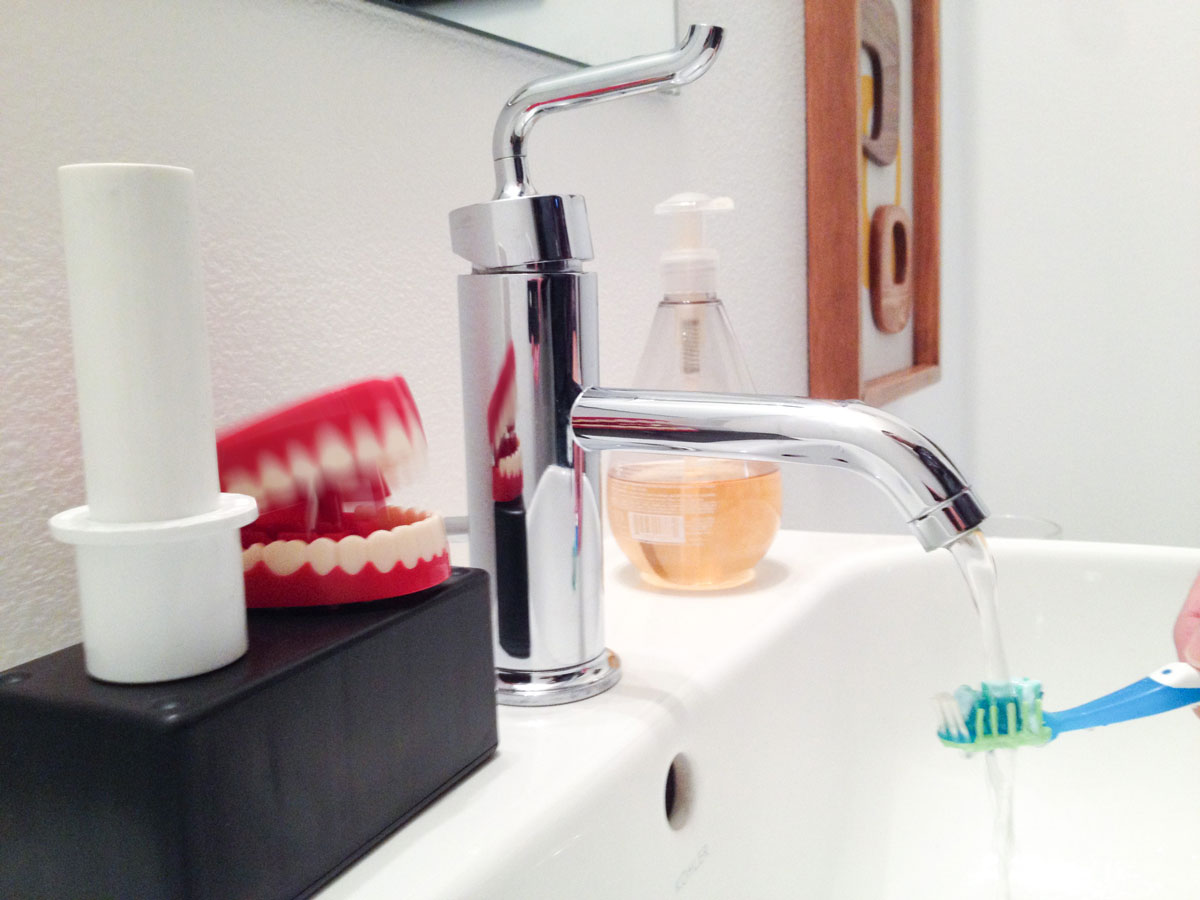Children and adults alike sometimes need help maintaining good toothbrushing habits. Experts suggest you brush for two minutes twice a day, but most people don’t come close to that. The Toothy Toothbrush Timer will help you get those recommended 120 seconds each time you brush. When the toothbrush is lifted from the holder, the teeth start chomping and continue cheering you on until your time is up. When the teeth finally come to a stop, just replace the toothbrush to turn it off.
It’s resistant to steam and occasional water splashes, so it will stand up to most bathrooms and keep your chompers in the best health.
How It Works
A switch is mounted under the toothbrush holder. When the toothbrush is lifted, the switch connects the battery to a timer circuit, which powers a servomotor. As the servo spins, it pushes a rod up and down. The rod opens and closes the teeth. When the timer is up the motor stops and the teeth go silent. When the toothbrush his returned to the holder the battery is disconnected.
We could have designed this timer using an Arduino or other microcontroller, but it’s so simple that all you really need is that trusty timer chip, the 555. Here’s how to make yours.



